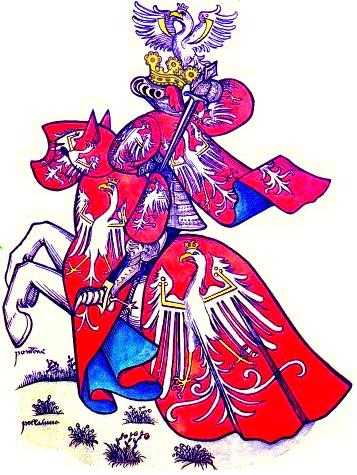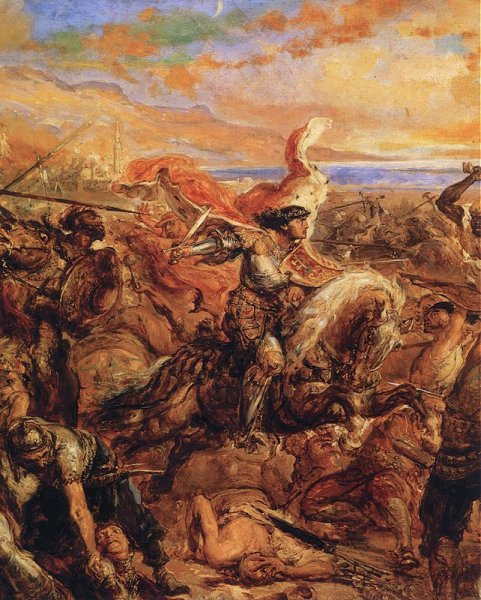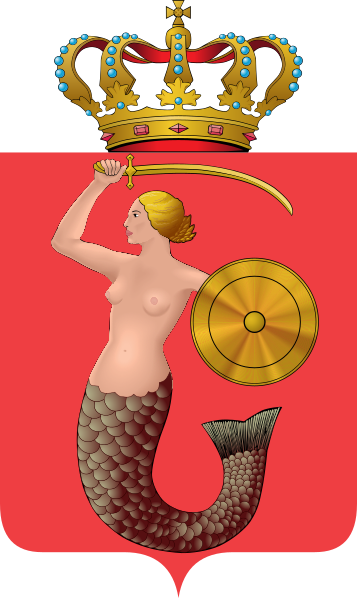History /
I would talk to you about our King WŁADYSŁAW WARNEŃCZYK [9]
in a time when almighty money rules us all,... still, there are values that are worth to be remembered. That`s why Wladyslaw Warnenczyk must be mentioned,...
If some Pole, from the `modern day` perspective, look at the example of Warnenczyk and his sacrafiction on Balkan, he can possible conclude that Warnenczyk died far from Poland, that his death didn`t serve to the Polish people, to Polish interests. So, in advance i say- Warnenczyk exactly died for Poland in attampt to prevent and reppel invasion on Polish soli, Polish realm and Polish interests.
Yes, Polish interests. Believe me, there was time when there were Polish interests and when Poland was able to hit hard if somebody endanger those interests.
One more thing. As we know Polish realm changed thru ages. Somehow, Polish realm is today smaller then it was in time of Warnenczyk. Once, even before Svatopluk`s Great Moravia was created, Polish cultural (old Slavic, from a Polish language speaking area) and economic (amber trade rutes) influences reached Balkan and Black see coast via Pannonia. It is said that Pannonia even got name by the title (Pan) of ancient Polish warlords.
So, considering that old Polish interests overlap with interests of Great Moravia, Poland of Wladyslaw Warnenczyk, Jagelonian Poland, Poland of Piasts or Polish-Lithuanian Comonwelth if you want, stays in dirrect continuity with ancient Sarmatia Europae. If so, I could be brave enough to say that continuity of Polish interests could be followed even back to the Dacian time of mighty Sarmizegetusa, on Balkan.
what i want to tell you Poles, don`t forget example of Wladyslaw Warnenczyk if you desire free and independant Poland, if you want to avoid humiliation by your enemies and by your false friends.
and, don`t think that Balkan is lost Poles. Serbians are scatered and wounded but, Serbians still stand
Symbollic sarcophagus of Władysław, Wawel Cathedral, Kraków "King of Poland" in tournamental armour. Miniature from Armorial equestre de la Toison d'Or, made circa 1435, during Władysław III's reign
"King of Poland" in tournamental armour. Miniature from Armorial equestre de la Toison d'Or, made circa 1435, during Władysław III's reign Władysław at the Battle of Varna. Unfinished painting by Jan Matejko
Władysław at the Battle of Varna. Unfinished painting by Jan Matejko A symbolic mausoleum of Vladislaus III in Varna, built in an antique Thracian mound tomb.
A symbolic mausoleum of Vladislaus III in Varna, built in an antique Thracian mound tomb.Warnenczyk
Wladyslaw III of PolandDid you know that the oldest recorded Polish religious hymn `
Bogurodzica` accompanied the coronation ceremony of Władysław Warneńczyk and other Jagiellonian kings. Before that, it was also sung at Grunwald in 1410 as well as before other battles in subsequent years.
 PolishForums LIVE / Archives [3]
PolishForums LIVE / Archives [3]



